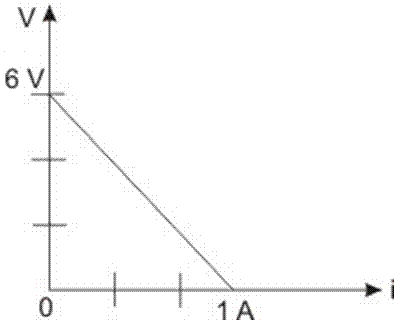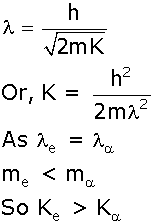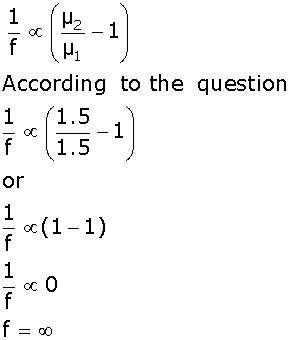CBSE Delhi-Set-2-2008
To Access the full content, Please Purchase
-
Q1
What is the direction of the force acting on a charged particle q, moving with a velocity
 in a uniform magnetic field
in a uniform magnetic field  ?Marks:1View Answer
?Marks:1View AnswerAnswer:
The force is given by

This force is right angles to &
&  .
.
-
Q2
State the reason, why two independent sources of light cannot be considered as coherent sources. Marks:1View AnswerAnswer:
Because, they will produce the phase difference and produce interference. -
Q3
Name the part of the electromagnetic spectrum of wavelength 10-2m and mention its one application. Marks:1View AnswerAnswer:
Microwaves. It is used in radar & communication purposes. -
Q4
A 500
 C
C charge is at the center of a square of side 10 cm. Find the work done in moving a charge of 10  C between two diagonally opposite points on the square.
Marks:1View Answer
C between two diagonally opposite points on the square.
Marks:1View AnswerAnswer:
According to the given condition, we have VOA = VOB
Therefore, work done is given by
W = q( VOB - VOA)
Hence, W is zero.
-
Q5
The plot of the variation of potential difference across a combination of three identical cells in series, versus current is as shown below. What is the emf of each cell?
 Marks:1View Answer
Marks:1View AnswerAnswer:
Since all the cells are connected in series so current flowing through each cell is same. Therefore total resistance given by
Rt = 6/1 = 6
= 6
Internal resistance of each cell is 6/3 = 2
= 2
Now e.m.f. of each cell is = 2 x 1A = 2 volts
x 1A = 2 volts -
Q6
An electron and alpha particle have the same de-Broglie wavelength associated with them. How are their kinetic energies related to each other? Marks:1View AnswerAnswer:

-
Q7
A converging lens of refractive index 1.5 is kept in a liquid medium having same refractive index. What would the focal length of the lens in this medium? Marks:1View AnswerAnswer:

-
Q8
How does the angular separation of interference fringes change, in Young’s experiment, if the distance between the slits is increased? Marks:1View AnswerAnswer:
When the separation between slits is increased, d increases. Therefore fringe width β decreases. -
Q9
Distinguish between an intrinsic semiconductor and p-type semiconductor. Give reason, why, a p-type semiconductor is electrically neutral, although nh>>ne ? Marks:2View AnswerAnswer:
An intrinsic semiconductor is a pure semiconductor where as a p-type semiconductor is a semiconductor doped with trivalent impurity atoms like boron or gallium. An intrinsic semiconductor has same number of holes and electrons while in a p-type semiconductor the number of holes is greater than the number of electrons. Each hole is associated with a nearby negative-charged dopant ion, and thus semiconductor remains electrically neutral as a whole . -
Q10
Define magnetic susceptibility of a material. Name two elements, one having positive susceptibility and the other having negative susceptibility. What does negative susceptibility signify?
Marks:2View AnswerAnswer:
Magnetic susceptibility:- It is the intensity of magnetization developed in the substance when placed in a magnetic field of unit strength.
Elements having positive susceptibility: aluminum, sodium.
Elements having negative susceptibility: antimony, copper
The minus sign(-ve) signifies that the magnetic field is weakened in the presence of the material.



